Do you have a question about the Canon PowerShot Elph 190 S and is the answer not in the manual?
Lists items included in the camera package such as battery, charger, strap, and printed matter.
Lists compatible memory card types like SD, SDHC, and SDXC, with a note on verification.
Covers test shots, image usage rights, warranty, and screen pixel policy.
Identifies camera buttons and controls with corresponding icons and labels for user reference.
Explains icons used in the manual for important notes, tips, and page references.
Details basic shooting actions like portraits, specific scenes, and applying special effects.
Explains how to view images, browse, erase, and play movies.
Covers recording movies and viewing them in playback mode.
Provides warnings about flash use, child safety, power sources, and product handling.
Advises on operation in restricted areas, skin contact, lens, flash, and storage.
Details safety measures for battery chargers, battery packs, and pets.
Covers attaching strap, holding camera, charging battery, inserting cards, and setting date/language.
Guides on turning camera on, shooting in Smart Auto, and viewing images.
Provides step-by-step instructions for threading the camera strap through the mount.
Advises on correct camera grip and hand placement during shooting.
Explains how to insert the battery, charge it using the charger, and remove it.
Details opening the cover and inserting the battery pack and memory card correctly.
Instructions on how to securely close the battery/memory card compartment cover.
Steps to open the cover and remove the battery pack and memory card.
Guides on turning on the camera, setting date/time, and specifying home time zone.
Explains how to access the menu, choose Date/Time, and adjust settings.
Details steps to enter playback mode, access settings, and select a display language.
Guides on turning on the camera, entering AUTO mode, and composing/shooting.
Focuses on pressing the shutter halfway for focus and then fully to shoot.
Explains how to start recording with the movie button and stop it.
Guides on entering playback mode, browsing images, and playing movies.
Details how to play movies, adjust volume, and pause playback.
Explains how to select an image and confirm its erasure.
Introduces basic operations including On/Off, shutter button, display options, and menu usage.
Explains how to turn the camera on/off and details power-saving features.
Details how the camera automatically deactivates the screen and turns off after inactivity.
Explains pressing the shutter button halfway for focus and fully to shoot.
Describes how to toggle information display and notes on screen brightness.
Provides steps to access, choose items, and configure options in the FUNC. menu.
Explains how to access the menu screen, choose tabs, and select menu items/options.
Explains the meaning of the green indicator light blinking during various operations.
Details how to use the on-screen keyboard for entering Wi-Fi connection information.
Introduces shooting in AUTO mode for automatic scene and condition selection.
Covers features like digital zoom and using the self-timer for convenience.
Explains how to customize image quality and recording pixels.
Details how to deactivate the focus assist lamp.
Guides on turning on the camera, entering AUTO mode, and composing/shooting.
Explains how to start and stop movie recording.
Details pressing the shutter button halfway for focus and fully to shoot.
Explains how to resize subjects and recompose shots for movies.
Details how to stop movie recording when the memory card is full.
Explains how to silence camera operations and restore sounds.
Addresses warnings for blur from camera shake, subject closeness, and flash recharging.
Advises on keeping fingers from the microphone and avoiding controls during movie recording.
Explains icons indicating scene modes and their corresponding settings for optimal shots.
Describes icons for Intelligent IS modes like Normal, Dynamic, Panning, and Powered.
Explains white, gray, and blue frames for subject detection and focus.
Details how to use digital zoom for up to 40x enlargement on distant subjects.
Explains how the camera automatically zooms to keep a detected face at a constant size.
Guides on configuring the self-timer for group photos and shooting.
Explains an option to delay shutter release for about two seconds to prevent shake.
Details specifying delay (0-30s) and number of shots (1-10).
Provides steps to prepare the camera for shooting without the flash.
Explains how to add the shooting date or time to images, noting it cannot be edited later.
Guides on holding the shutter button down to shoot continuously.
Explains choosing image size from 5 levels and guidelines for paper size.
Details two image quality settings for movies: HD and standard definition.
Explains how to deactivate the lamp that aids focusing or reduces red-eye.
Covers shooting in various scenes like Fireworks, Portraits, and Low Light.
Details applying effects like Vivid Colors, Poster Effect, and Fish-Eye Effect.
Explains modes like Face Self-Timer and Long Exposures.
Describes shooting vivid fireworks and precautions for stability.
Explains taking shots of people with a softening effect.
Covers shooting with minimal shake in low-light conditions.
Explains achieving shots in rich, vivid colors.
Details creating shots that resemble old posters or illustrations.
Guides on shooting with the distorting effect of a fish-eye lens.
Explains blurring image areas and setting movie playback speed.
Details applying vignetting and changing overall color for a toy camera look.
Explains shooting images in black and white, sepia, or blue.
Explains shooting about 2 seconds after detecting a new face.
Guides on specifying shutter speeds from 1-15 seconds for long exposures.
Explains customizing function settings to suit preferred shooting style in P mode.
Covers adjusting image brightness via exposure compensation.
Explains how to adjust white balance for natural image colors.
Details close-up shooting (Macro) and distant subject focusing.
Covers flash modes like Auto, On, Slow Synchro, and grid lines.
Guides on entering P mode and customizing desired settings before shooting.
Explains adjusting brightness in 1/3-stop increments using the exposure compensation bar.
Details options like Evaluative, Center Weighted Avg., and Spot metering.
Explains setting ISO to AUTO or manual values for sensitivity.
Explains automatic adjustment of bright/dark areas and overall contrast.
Details options like Auto, Day Light, Cloudy, Tungsten, Fluorescent, and Custom.
Guides on adjusting white balance under specific light sources for natural colors.
Details restricting focus to subjects at close range using Macro mode.
Explains setting focus to distant subjects using Infinity mode.
Covers modes like Face AiAF, Tracking AF, and Center AF.
Guides on choosing subjects and using Tracking AF with Servo AF.
Explains how Servo AF helps track moving subjects for focus and exposure.
Describes checking focus by magnifying the image in the AF frame.
Explains changing between continuous focus (On) and manual focus (Off).
Details changing flash modes like Auto, On, and Slow Synchro.
Explains how to display grid lines on the screen for shooting reference.
Guides on deactivating digital zoom if it is not preferred.
Explains changing how long images are displayed and what info is shown.
Details settings for IS modes like Continuous, Shoot Only, and Dynamic IS.
Explains how to choose Dynamic IS settings to keep subject size constant.
Covers browsing, filtering, and viewing images and slideshows.
Explains how to prevent accidental erasure of important images.
Details erasing single or multiple images and cancelling erasure.
Guides on changing image orientation and deactivating auto rotation.
Explains organizing images by tagging them as favorites.
Covers resizing images and correcting brightness (i-Contrast).
Guides on entering playback, browsing, and playing movies.
Details how to play movies, adjust volume, and pause playback.
Explains how to toggle between no info, simple info, and detailed info displays.
Explains the overexposure warning that flashes for highlights in detailed display.
Describes the histogram as a graph showing brightness distribution for exposure checking.
Guides on displaying multiple images in an index for quick finding.
Explains finding images by shot date, favorites, or still/movie type.
Guides on starting and stopping slideshows with specified image display durations.
Details how to zoom in and move the display position of magnified images.
Guides on protecting important images to prevent accidental deletion.
Explains setting slideshows to repeat and changing transitions.
Details accessing menu screens and choosing selection methods.
Guides on selecting individual images and protecting them.
Explains selecting a range of images by specifying start and end points.
Guides on protecting all images on the memory card simultaneously.
Explains how to select an image and confirm its erasure.
Guides on choosing a selection method and erasing multiple images.
Details selecting and erasing single images from the camera.
Explains selecting a range of images for erasure.
Guides on selecting all images for erasure.
Details rotating images 90° and completing the setting.
Explains how to deactivate automatic rotation based on camera orientation.
Guides on tagging images to organize them and restrict operations to favorite images.
Explains saving copies of images at lower recording pixel settings.
Explains automatic adjustment of bright/dark areas and overall contrast.
Guides on automatically correcting red-eye and saving the corrected image.
Lists devices and services connectable via Wi-Fi: smartphones, computers, printers, web services.
Covers connecting via NFC or Wi-Fi menu to send images to smartphones.
Explains preparing to register a computer and installing software.
Details registering web services like CANON iMAGE GATEWAY.
Guides on connecting the camera to a printer via Wi-Fi for wireless printing.
Explains sending images wirelessly between Wi-Fi-compatible Canon cameras.
Covers sending multiple images, changing size, and adding comments.
Details automatically sending images to a computer or web services.
Explains browsing images, geotagging, and shooting remotely using Camera Connect app.
Covers editing connection info, changing nickname, and resetting Wi-Fi settings.
Lists devices and services connectable via Wi-Fi: smartphones, computers, printers, web services.
Explains connecting via NFC or Wi-Fi menu using the Camera Connect app.
Guides on using NFC to install Camera Connect and connect the camera.
Details NFC connection steps when camera is off or in shooting mode.
Guides on selecting and sending images, and ending the NFC connection.
Explains how to add a smartphone using the camera as an access point or existing access point.
Describes NFC connection when the camera is in playback mode.
Guides on connecting to a network and sending images.
Explains choosing yes/no for viewing images on the smartphone.
Guides on using an existing access point for Wi-Fi connection.
Covers compatibility info and installing the necessary Canon software.
Details downloading and installing Canon software like CameraWindow.
Guides on confirming computer network connection and configuring settings.
Checks Wi-Fi router compatibility and network name/security settings.
Explains using WPS for easy connection setup with supported devices.
Guides on choosing connection methods like WPS or adding a device.
Details the process of adding a new device to connect to.
Explains selecting WPS Connection and the PBC Method.
Guides on viewing listed networks and choosing one for connection.
Explains how to access CameraWindow software for image transfer.
Guides on reconnecting to previously used Wi-Fi access points.
Details linking the camera to CANON iMAGE GATEWAY via Wi-Fi.
Guides on establishing access point connection and entering email address.
Explains connecting to access points for web service setup.
Details entering the email address for notification messages.
Guides on entering a four-digit number for linkage setup.
Explains completing settings on the camera for CANON iMAGE GATEWAY.
Guides on adding web services besides CANON iMAGE GATEWAY.
Details accessing Wi-Fi menu, choosing destination, and sending images.
Guides on accessing Wi-Fi menu, choosing printer, and connecting.
Explains connecting two cameras via Wi-Fi and sending images.
Guides on selecting and sending images between cameras.
Covers specifying image ranges or sending favorite images.
Guides on selecting a range of images for sending.
Explains sending only images tagged as favorites.
Explains choosing image size and options for original size or resizing.
Guides on adding comments to images sent via email or social networks.
Covers network conditions, web service limits, and wireless signal strength.
Covers preparing the camera by registering destinations and preparing the computer.
Explains sending images automatically to the computer or web services.
Guides on using the Canon Online Photo Album app to view images.
Explains automatic saving of images to the computer or web services.
Explains using the Camera Connect app to browse and save images.
Guides on securing the camera and shooting remotely using the smartphone.
Explains adding GPS data from a smartphone to images for location information.
Guides on accessing Wi-Fi menu and choosing a device to edit.
Explains how to erase connection information for devices.
Details changing the camera nickname displayed on connected devices.
Guides on erasing connection information about connected devices.
Explains how to change the camera nickname for connected devices.
Guides on returning Wi-Fi settings to default, including web services.
Covers silencing operations, adjusting volume, hiding tips, date/time, world clock, and lens retraction.
Explains how to silence camera sounds and movies.
Guides on adjusting the volume of individual camera sounds.
Explains how to deactivate the display of hints and tips.
Guides on setting the camera's date and time accurately.
Explains registering destinations and switching time zones.
Guides on setting lens retraction timing to 0 sec. for immediate retraction.
Explains enabling Eco Mode to darken the screen and save battery.
Details adjusting timings for automatic camera and screen deactivation.
Guides on adjusting screen brightness and setting it for maximum brightness.
Explains how to deactivate the start-up screen shown when turning on the camera.
Guides on formatting memory cards before first use.
Explains when to use low-level formatting for errors or slow performance.
Details changing how the camera assigns file numbers, including continuous and auto reset.
Guides on creating daily folders instead of monthly ones for image storage.
Explains switching units for GPS elevation and zoom bar display.
Guides on viewing certification logos on the camera screen.
Details selecting a preferred language for the camera display.
Mentions adjusting Video System and Wireless settings.
Guides on restoring all camera settings to their original default values.
Provides an overview of included and optional accessories and their connections.
Lists and describes optional accessories like power supplies, flashes, and printers.
Covers playback on TV and using camera software.
Details easy printing, configuring print settings, and adding images to print lists.
Shows included accessories and how they connect to the camera and other devices.
Lists Battery Packs and Chargers, with usage notes.
Details the High-Power Flash HF-DC2 for illuminating subjects.
Lists Interface Cables and AV Cables for connectivity.
Mentions Canon-Brand PictBridge-Compatible Printers for direct printing.
Describes the CS100 as a media hub for storing, viewing, and sharing images.
Guides on connecting the camera to a TV using the AV Cable for viewing.
Details software like CameraWindow, Image Transfer Utility, and Map Utility.
Advises checking system requirements for Canon software.
Guides on downloading and installing software from the Canon website.
Details connecting the camera to a computer using a USB cable.
Explains importing images using CameraWindow and saving them to the computer.
Guides on easily printing shots by connecting to a PictBridge-compatible printer.
Covers print format, date, file number, copies, and cropping.
Explains cropping images to print a desired area instead of the entire image.
Guides on choosing paper size and layout options like Bordered or N-up.
Details printing ID photos with custom size, length, and printing area.
Explains printing single scenes or sequences from movies.
Covers print type (Standard, Index), date, file number, and clearing DPOF data.
Guides on selecting images and specifying the number of prints.
Explains selecting a range of images and ordering them for print.
Guides on selecting all images for printing setup.
Explains how to clear all selected images from the print list.
Guides on connecting to a printer and printing images from the DPOF list.
Explains selecting images for photobook setup.
Guides on selecting all images for inclusion in a photobook.
Explains how to remove all selected images from photobook setup.
Provides solutions for common problems encountered during camera use.
Explains on-screen messages and shooting/playback information displays.
Lists functions available in shooting modes and menu tables.
Covers precautions for handling the camera and technical specifications.
Addresses problems like no power, swollen battery pack, and battery life.
Covers inability to shoot, screen display problems, and date stamp errors.
Provides tips for achieving correct focus and when AF frames are not displayed.
Offers solutions for dark subjects using flash, exposure compensation, and metering.
Provides tips for bright subjects with washed-out highlights using flash and exposure.
Suggests shooting within flash range and increasing ISO speed.
Advises shooting within flash range and using flash mode.
Explains white spots are caused by flash reflecting off dust or particles.
Suggests lowering ISO speed and avoiding high ISO speeds.
Details using the red-eye reduction lamp and editing images.
Recommends low-level formatting or switching memory cards.
Addresses incorrect elapsed time or interrupted recording.
Covers playback not possible, stopping, or audio skipping.
Addresses problems with the memory card not being recognized.
Covers problems transferring images to a computer via cable.
Addresses issues with accessing Wi-Fi menu, adding devices, and connecting.
Covers issues like insufficient storage space and write-protect switches.
Notes that images cannot be resized larger than original or movies resized.
Suggests resizing images, moving closer to devices, and avoiding interference.
Guides on checking email addresses and settings for notifications.
Recommends resetting Wi-Fi settings to default.
Explains the "No memory card" error and how to reinsert it correctly.
Addresses the "Memory card locked" error related to the write-protect switch.
Covers the "Cannot record!" error, usually due to no memory card.
Addresses "Memory card error" and suggests formatting or contacting support.
Explains the "Insufficient space on card" error and solutions.
Notes the "Protected!" message and its implications.
Covers errors related to unsupported or corrupt media files.
Explains why functions like magnify or rotate might be unavailable for certain images.
Addresses errors when too many images are selected for operations.
Guides on changing file numbering or formatting the card for naming errors.
Explains lens errors related to movement or dusty conditions.
Guides on handling general camera errors and recording error numbers.
Covers issues with printing photos from other cameras or altered images.
Addresses print errors related to paper size settings.
Advises contacting support for ink absorber replacement.
Covers connection failures, device not found, and access point issues.
Addresses password and security setting errors.
Guides on resolving IP address conflicts.
Covers signal obstruction, interference, and device errors.
Addresses memory card errors during sending.
Guides on creating space on the target card for receiving images.
Explains the write-protect switch issue when receiving.
Covers issues when folder or image numbers reach their limit.
Advises deleting unnecessary images from CANON iMAGE GATEWAY.
Guides on ensuring the computer can connect to the internet.
Explains icons and indicators shown during shooting.
Describes on-screen icons and messages for battery charge level.
Explains the detailed information displayed during playback, including movie controls.
Provides a table showing function availability in different shooting modes.
Details function availability across shooting modes within the FUNC. menu.
Shows available recording pixel settings for each shooting mode.
Displays movie quality settings available in different shooting modes.
Details AF Frame modes, Digital Zoom, AF-Point Zoom, and Servo AF settings.
Covers Lamp Settings and i-Contrast adjustments.
Explains settings for display time and information content after shooting.
Guides on turning grid lines on or off for shooting.
Details IS Mode settings like Continuous, Shoot Only, and Dynamic IS.
Guides on adding date or date & time stamps to images.
Lists items in the Set Up tab, like Mute, Format, and Reset All.
Lists items in the Print tab, like Print, Select Images, and Paper Settings.
Lists options available in the Playback Mode FUNC. menu.
Advises on avoiding drops, impacts, magnets, and cleaning.
Lists technical details for Camera, Lens, and Screen.
Provides CIPA compliant speeds and flash range details.
Lists shutter speed ranges for Auto and other shooting modes.
Lists AF Frame options like Face Detect, Tracking AF, and Center.
Lists MP4, MPEG-4 AVC/H.264, and MPEG-4 AAC-LC for movies.
Details Wi-Fi standards, frequency, channels, and security.
Provides physical dimensions and weight of the camera.
Provides estimates for shots, movie recording time, and playback time.
Lists approximate shots per 16GB memory card for different image sizes.
Shows recording times for different resolutions and card capacities.
Details focus range for AUTO and other modes at wide and telephoto ends.
Lists type, voltage, capacity, charging cycles, and operating temperatures.
Details input, output, charging time, and operating temperatures.
Covers country/region restrictions, legal penalties, and export regulations.
Advises noting wireless settings and resetting for transfers.
Warns about interference from other electronic devices and suggests distance.
Emphasizes using authorized networks and securing Wi-Fi.
Details risks like transmission monitoring and unauthorized access.
Lists trademarks (Microsoft, Apple, Wi-Fi Alliance) and software licenses.
States copyright restrictions, disclaimer on accuracy, and Canon's liability.
| Brand | Canon |
|---|---|
| Model | PowerShot Elph 190 S |
| Category | Digital Camera |
| Language | English |
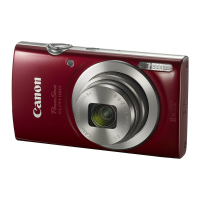

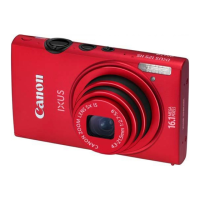
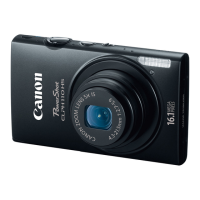
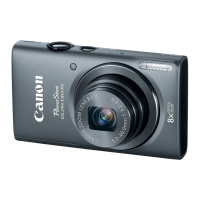




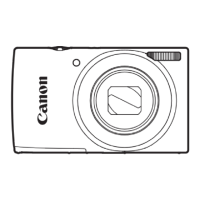
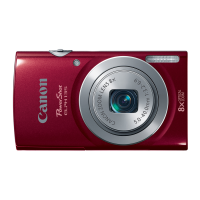
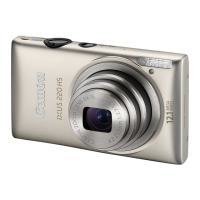
